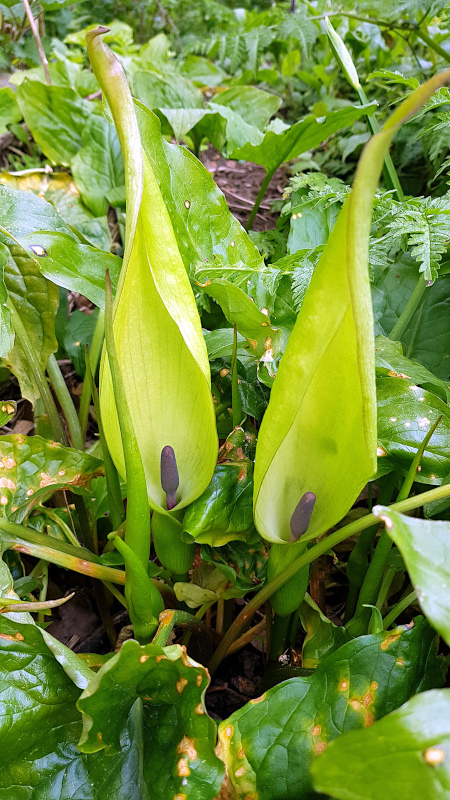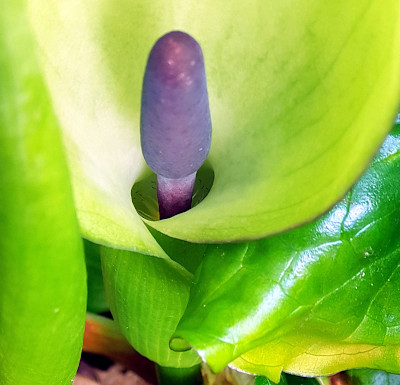The cuckoo pint is a common spring wild flower but its name has nothing to do with beer. It has far more iffy origins. This plant no only looks a bit different – it’s positively strange in almost every way.
The more conventional name for this plant is arum lily (Arum maculatum) being a relative of the cultivated peace lily and common wild duckweed mentioned in a recent post. Readers might recall that one of the duckweeds (Wolffia) has the smallest of all flowers, yet its relative, the titan arum, has the largest known single flower. Such is the power of evolution.

The flower of the arum lily has a large leaf-like cowl (the spathe) through which pokes the odd-looking pink spike, called the spadix. Below the spadix are the main parts of the flower contained in a small chamber. The arum lily is pollinated by small insects which are attracted to the plant by the spadix which heats up sometimes to a temperature of 45 degrees C. The hot spadix in plant relatives of the arum lily, such as the dead horse arum, also gives off the scent of rotting meat to attract pollinating insects.
Insects crawl down into the flower chamber below where they pass downward-projecting hairs which stop them from crawling back out. Now trapped, the insects wander about in the chamber picking up pollen as they go. By late afternoon, the imprisoning plant hairs at the mouth of the flower wilt and let the insects out to find other arum lilies to pollinate.

There is much folklore surrounding the arum lily and judging from the flower’s appearance, it’s not surprising. The cuckoo pint is an abbreviation of the word ‘pintle’, an Old English term for penis. Other country names hint at this more suggestive description of the plant such as lords and ladies, Robin and Joan, priest’s pintle, silly lovers, cows and bulls, snake’s meat, sucky calves, willy lily, and many more requiring a higher censorship setting.
The plant does have some practical applications including culinary uses. But beware! If it is not prepared properly it is highly toxic to eat – so don’t bother. The roots of the plant contain quite a lot of starch and during the middle ages the starch was used for church linens. At one time, communion linens could only be starched with arum lilies.
The first part of the name of this interesting plant stems from the appearance of the flower coinciding with the arrival of migrating cuckoos around the end of April.